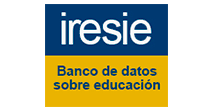ONLINE DISTANCE EDUCATION AND THE MYTH OF PASSIVITY
DOI:
https://doi.org/10.5216/ia.v37i2.20725Keywords:
Ead on-line. Passividade e atividade. Formação humana e iniciativa.Abstract
A recurring theme in on-line distance education studies is that one of the greatest virtues of this new modality in the ?eld of education is its capacity to introduce “activity” where “passivity” had always reigned. The logic of this view is relatively simplistic: “traditional” teaching is necessarily associated with a ?awed treatment of students, reduced to a total lack of initiative in all circumstances. But what do these two terms activity and passivity mean, thus contrasted as if the presence of one necessarily implied the absence of the other? What does this anthropological model, implicitly endorsed by the most varied discourses on online distance education, correspond to?Downloads
Downloads
Published
How to Cite
Issue
Section
License
Inter-Ação uses the Creative Commons Attribution 4.0 License for Open Access Journals (Open Archives Initiative - OAI) as the basis for the transfer of rights. Open access means making documents available on the Internet free of charge, so that users can read, download, copy, distribute, print, search, or link to the full text of documents, process them for indexing, use them as input data for software programs, or use them for any other lawful purpose, without financial, legal, or technical barriers.
Authors publishing in this journal agree to the following conditions:
1) Authors retain copyright and grant the journal the right of first publication, with the work simultaneously licensed under the Creative Commons Attribution License, which permits redistribution of the work with attribution and first publication in this journal.
2) Authors are permitted to enter into additional, separate agreements for non-exclusive distribution of the version of the work published in this journal (e.g., for publication in an institutional repository or as a book chapter), with attribution and first publication in this journal.
3) Authors are permitted and encouraged to publish and distribute their work online (e.g. in institutional repositories or on their home page) at any time before or during the editorial process, as this may generate productive changes as well as increase the impact and citation of the published work.















